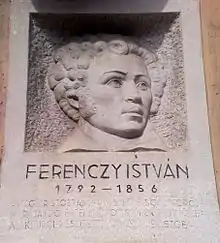
Relief of István Ferenczy on the corner of Magyar utca/ Ferenczy István utca in Budapest, District V
%252C_Istv%C3%A1n_FERENCZY_(1792-)%252C_L'all%C3%A9gorie_de_la_science%252C_1842-1843._D%C3%A9tail_du_projet_de_m%C3%A9morial_du_roi_Matthias.JPG.webp)
The Allegory of Science by István Ferenczy, Hungarian National Gallery in Buda Castle, 1842–1843
István Ferenczy (February 24, 1792 – July 4, 1856) was a Hungarian sculptor.
Career
Ferenczy made a number of exerted attempts to establish a school of sculpture in Hungary and it was his mission to establish and promote national art in Hungary. However, he proved to be unsuccessful in setting up a sculptural school, but many of his works remain in the Hungarian National Gallery as a symbol of Hungarian art during the first half of the nineteenth century.
Ferenczy died in 1856 in Rimaszombat.
Some works
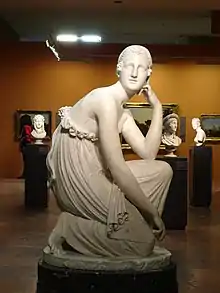 István Ferenczy, The Beginning of Art (Little Shepherdess), 1820–1822 |
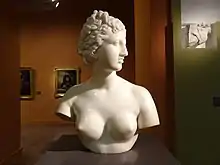 István Ferenczy, Bust of the Medici Venus, after 1822 |
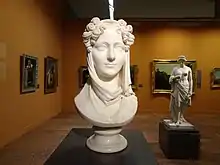 István Ferenczy, Portrait of Countess Viczay, 1824 |
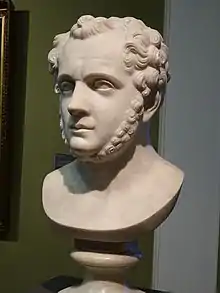 István Ferenczy, Self-portrait, 1830 |
External links
![]() Media related to István Ferenczy at Wikimedia Commons
Media related to István Ferenczy at Wikimedia Commons
- Biography
- Simon Meller: Istvan Ferenczy lives and works in Budapest, 1908
This article is issued from Wikipedia. The text is licensed under Creative Commons - Attribution - Sharealike. Additional terms may apply for the media files.